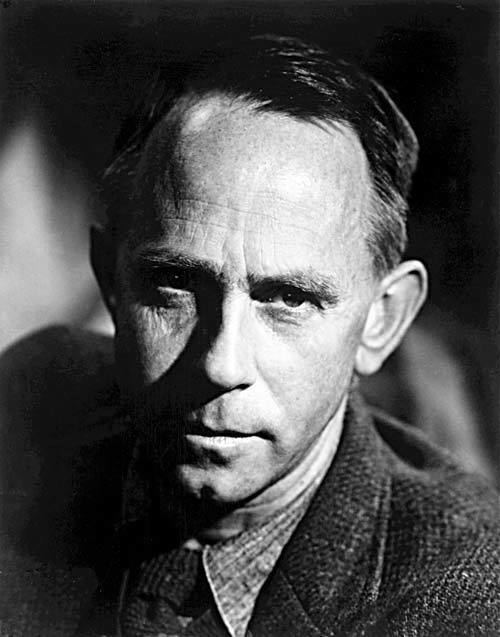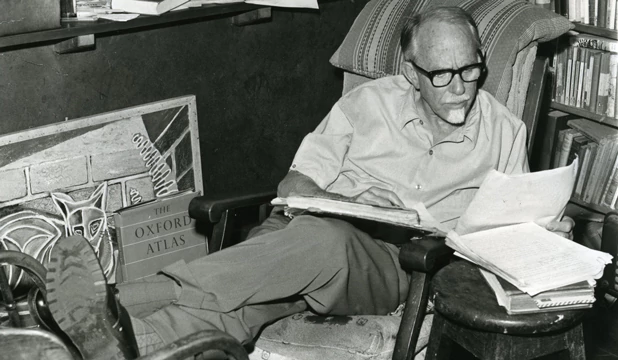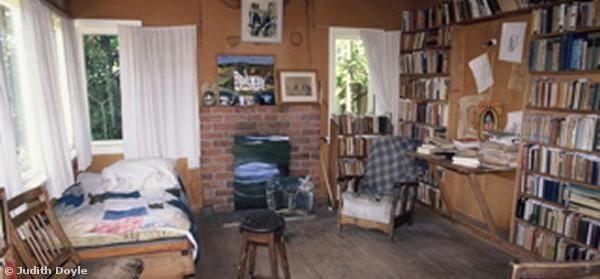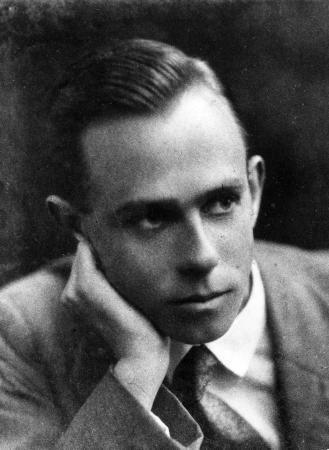Name Frank Sargeson | Role Short story writer | |
 | ||
Died March 1, 1982, Auckland, New Zealand Books Conversation with My Uncle | ||
Karl urban reads perfectly frank the life of a new zealand writer frank sargeson
Frank Sargeson (23 March 1903 – 1 March 1982) was the pen name of Norris Frank Davey. He is considered one of New Zealand's foremost short story writers. Like Katherine Mansfield, Sargeson helped to put New Zealand literature on the world map.
Contents
- Karl urban reads perfectly frank the life of a new zealand writer frank sargeson
- Biography
- Timeline of Major Events involving the Esmond Road property
- Grimshaw Sargeson Fellowship
- References

Sargeson has been credited with introducing New Zealand English into short stories. His technique was to write the story without mentioning the setting. He also used a semi-articulate style, meaning that the story was written from a naive point of view. Events are simply told but are not explained.

Biography

Sargeson was born in Hamilton on 23 March 1903.

Although Sargeson became known for his literary depiction of the laconic and unsophisticated New Zealand male, his upbringing had in fact been comfortable albeit puritanical. Upon completing his training as a solicitor, he spent two years in the United Kingdom. Sometime in the 1930s, he began living year-round in his parents' holiday cottage at 14A Esmonde Road in Takapuna, a northern suburb of Auckland. He eventually inherited the property which became for several decades an important gathering place for Auckland's bohemia and literati.

The original bach was described by Sargeson as “nothing more than a small one-roomed hut in a quiet street ending in a no-man’s land of mangrove mud-flats that belonged to the inner harbour. It was very decayed, with weather-boards falling off.”
Michael King, who wrote Sargeson’s entry in the Dictionary of New Zealand biography, as well as a major biography of Sargeson says that “even Don Doran, who disparaged bourgeois standards and conventions, declined to spend a night there when he visited Frank from Wellington soon after his protégé had moved in; he told his daughter the conditions were ‘too rough’. Whilst the original bach must have been pretty basic, the jewel of the property was the vegetable garden.
The vegetable garden, which is no longer there, was an important part of the property to Sargeson. Michael King, again, on the importance of growing vegetables to Frank: The success of that first season of fruit and vegetable production, and the excitement and profound satisfaction it bought, had an enduring effect. “[It] ensured that for more than thirty years I would grow on a scale sufficient to provide for myself, with often besides a good deal to sell or give away.”
After the original bach was condemned by local government a second bach was built in 1948 by Frank’s friend George Haydn. Haydn writes of the events that led to him building the bach in his essay The House That George Built:
“Sadly, Brown’s plans cost too much and I volunteered to draw up something more affordable. But at least my plan still had the Vernon Brown sloping roof and ceiling. I used standard joinery and the least expensive materials that complied with the building code: asbestos fibrolite cladding and roof, and Pinex for the inside lining…Everything went smoothly and Frank did what he could to help. However he was highly excitable, fretful, and reminded me of an anxious helicopter hovering over the job.”
When Janet Frame was released in 1955 from eight years of voluntary incarceration in New Zealand psychiatric hospitals, Sargeson invited her to stay in a former army hut on his property. He introduced her to other writers and affirmed her literary vocation and encouraged her to adopt good working habits. She lived in the shed for about a year, during which time she wrote her first novel, Owls Do Cry.
Timeline of Major Events involving the Esmond Road property
The following timeline of major events involving the Esmonde Road property is an abridged version of the one that was prepared for the Friends of Sargeson House by Judy Wilson & Jenny Chamberlain, which is part of the documentation about the house held at Takapuna Library.
1924 - The bach at Esmonde Road came into the Sargeson family’s ownership.
1931- Sargeson took up residence in the house at 14 Esmonde Road.
1946 - The original Esmonde Road bach was condemned by local government, according to Louise Anderson it was in a near derelict state and was considered unsightly by the neighbours who lodged many complaints about the smelly drains and the lack of sanitary facilities. For years Frank had put them off by having a friend, the architect Vernon Brown, draw up plans for a new house and pretend to measure out for foundations to placate the complainants.
1948 - The present day fibrolite dwelling was designed and built by George Haydn and finished in June. It was paid for by a combination of pension funds and family loans. Sargeson’s brief to Haydn was that he wanted “lots of bookshelves, a kauri top bench and a sunken toilet.” As more and more visitors came to Esmonde Road, Frank decided to buy an army hut and put this on the section. Frank bought the army hut originally for Jack Whewell (who didn’t use it).
1950 - The first inhabitant of the army hut was Maurice Duggan (April to May), then Peter Dawson (December to January).
April 1955 to July 1956 - Janet Frame lived in the army hut for 16 months and wrote her novel Owls Do Cry.
1956/7 - Kevin Ireland in army hut.
1958 - Esmonde Road was sealed as a feeder road for the new Harbour Bridge; Maurice Duggan returned to the army hut for a while.
1968 - Harry Doyle’s room was built (designed by Nigel Cook).
1982 - The back lot was sold to set up Frank Sargeson Trust & fund fellowships, and thus the house we visit today became 14a Esmonde Road.
During the 1930s and 40s, Sargeson experienced considerable economic hardship, as his literary output earned him very little money. This experience left him permanently sympathetic to the Left. For example, he quietly advocated closer relations between New Zealand and Maoist China. He was also gay at a time when sodomy was illegal in New Zealand. In 1929, he was arrested on a morals charge in Wellington, but later acquitted. King (1995) believes that this trial explains why Sargeson adopted a pen name and never practised the profession for which he had trained.
Sargeson died in Auckland in 1982. He left his estate to Christine Cole Catley to manage, who launched the Frank Sargeson Trust.
Grimshaw Sargeson Fellowship
A fellowship run by The Frank Sargeson Trust in association with Auckland University and sponsored by law firm Grimshaw & Co supports writer(s) to live in the Sargeson Centre, adjacent to the University of Auckland, with an annual stipend.
